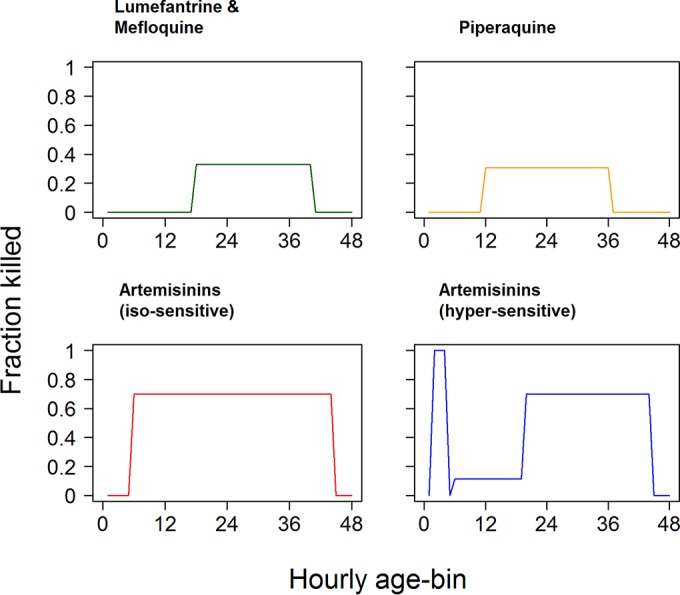FIG 1.

Pharmacodynamic profiles of antimalarial drugs used in the discrete-time methodology. The profiles describe the fraction of parasites killed per hour by the drug for each of the 48-h age bins (i.e., 1 − Ψb,t from equation 5). Calibrations are based on an asynchronous, “uniform” parasite infection, which results in a PRR48 of 103 (lumefantrine, mefloquine, and piperaquine) or a PRR48 of 104 (artemisinins). We investigated two profiles of sensitivity to artemisinins. The “isosensitive” profile assumes that all parasite stages are equally sensitive to artemisinin: this is essentially the same profile as that for partner drugs but with a wider range of stages being killed. The other “hypersensitive” profile assumes differential artemisinin killing between the stages. This seems intuitively plausible because drug sensitivity presumably depends on the metabolic processes taking place at each stage of development and also reflects recent findings that P. falciparum appears far more sensitive to artemisinins in the early ring stages than in later stages (43).
